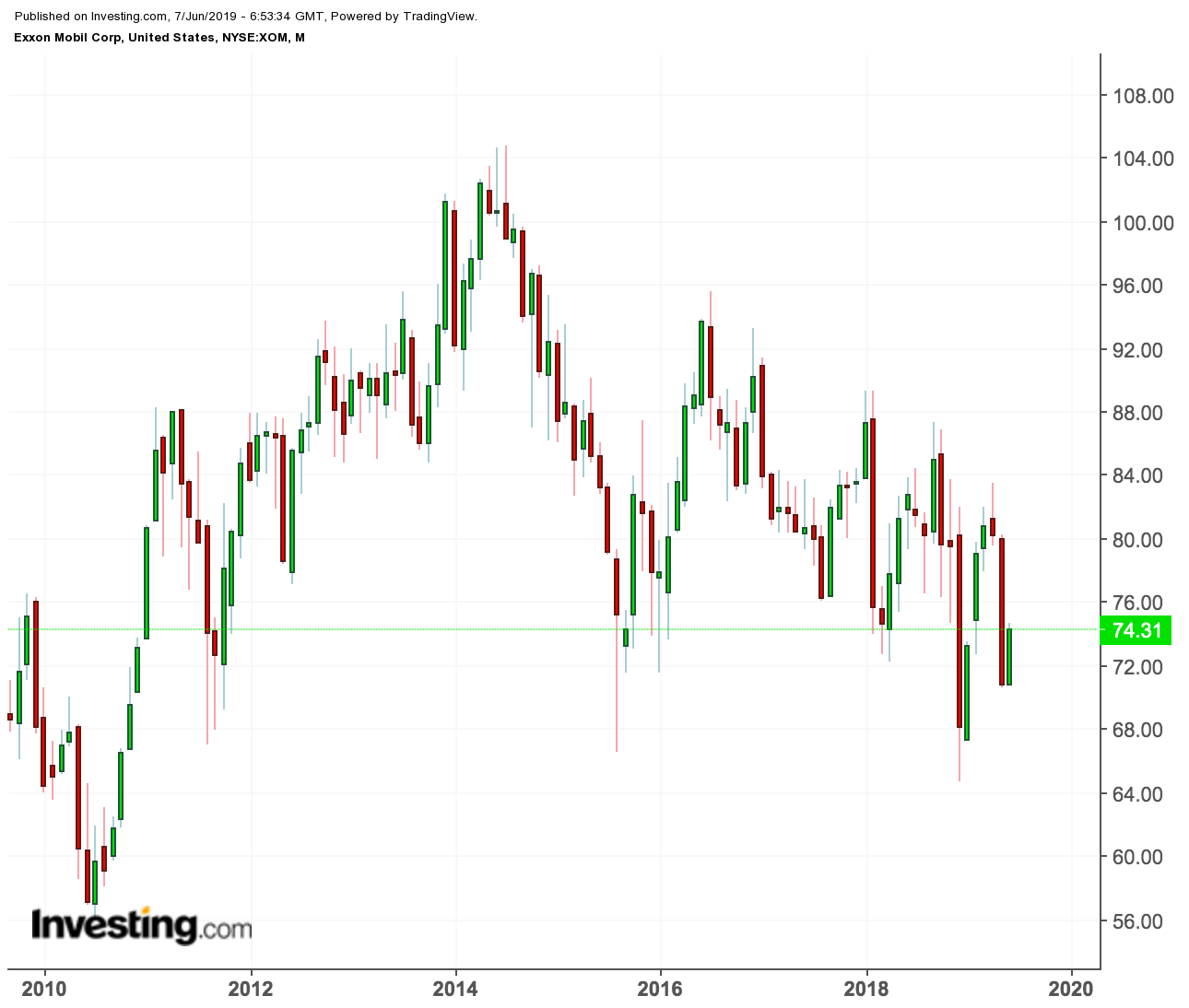When interest rates fall, the stocks that pay dividends become more attractive. This is because in a falling rate environment, the so-called safe-haven assets, such as government bonds and the bank saving accounts, pay close to zilch, forcing investors to look for other opportunities to earn some decent returns.
With the U.S. Federal Reserve signalling a rate cut as its next move instead of a widely expected rate hike, it’s probably a good time to scan the dividend-paying space and look for companies that have made returning cash to investors their priority. Today, we are focusing on two oil super-majors to see which fit best into this strategy.
1. Royal Dutch Shell
Among the oil supermajors, it’s hard to ignore Royal Dutch Shell (NYSE:RDSa) when it comes to earning a hefty dividend. The company pays $0.94 a share quarterly dividend which translates into a 6% dividend yield on yesterday’s price.
The shares closed up 1.4% at $63.62 yesterday, on their fourth consecutive day of gains. They're up 9.5% so far this year, and, despite the tribulations of the past few years, have risen 17% in the last decade.

In its latest strategy update on Tuesday, the Anglo-Dutch oil major is forecasting a much stronger cash generation over the coming years. That could mean the producer will be in a better position to hike its dividend that it kept flat during the past four years.
Shell says it has the potential to spend $125 billion on dividends and share repurchases between 2021 and 2025. The company paid $16 billion in annual dividend last year on top of the current buyback program that is averaging out just under $10 billion annually.
That forecasts could prove optimistic, however, if the current downturn in oil prices persists. Shell stock underperformed after the 2014 oil slump as the company’s debt ballooned after its massive acquisition of BG Group. Since then, Shell worked aggressively to cut its debt and has made returning cash to investors its priority.
In our view, Shell is in a much better-prepared this time to cope with a prolonged slide in oil prices thanks to the company’s aggressive debt reduction strategy, backed by its plans to sell assets worth $30 billion.
2. Exxon Mobil
Exxon Mobil Corp (NYSE:XOM), another global oil producer, offers a different risk-reward equation if you’re in search for higher dividend yields. After an 8% decline in the past three months, its stock is now yielding about 4.7% dividend yield, much higher than its past five-year average of about 3.5%.
The company pays $0.87 a share quarterly payout, which has grown over 5% per annum in the past five years.
In contrast to Shell, Exxon has increased its dividend each year, for more than 30 years in a row, despite operating in a highly volatile sector. This accomplishment says a lot about the quality of the company’s balance sheet and its ability to generate superior returns for shareholders.
The shares closed up 1.8% yesterday, at $74.31, and have climbed 9% since the start of 2019. The stock's performance over the past 10 years hasn't been spectacular, but it's still gained 1.8% in that time.

Exxon, when compared to pure upstream players, has the better ability to ride the downturn in the energy markets due to the company’s tremendous scale and its asset diversification. The company’s dominant position in upstream, downstream, and chemicals industries helped it to remain profitable, even during recessions and periods of severe commodity market consolidation.
Bottom Line
For long-term income investors, both companies offer a different appeal. If you're an oil bull, Shell’s juicy dividend yield is worth considering, especially as the company’s effort to repair its balance sheet is producing results. If oil prices improve from here, Shell has an attractive asset mix to produce robust cash flows with the potential for growing dividends.
Exxon's yield, on the other hand, may not be as enticing, but the company is one of the best operators in the oil business. Its balance sheet is strong, its dividend payout ratio is manageable and the company has a massive growth plan in place. We like both stocks for the buy-and-hold investors whose objective is to earn steady income.
Which stock should you buy in your very next trade?
AI computing powers are changing the stock market. Investing.com's ProPicks AI includes 6 winning stock portfolios chosen by our advanced AI. In 2024 alone, ProPicks AI identified 2 stocks that surged over 150%, 4 additional stocks that leaped over 30%, and 3 more that climbed over 25%. Which stock will be the next to soar?
Unlock ProPicks AI
